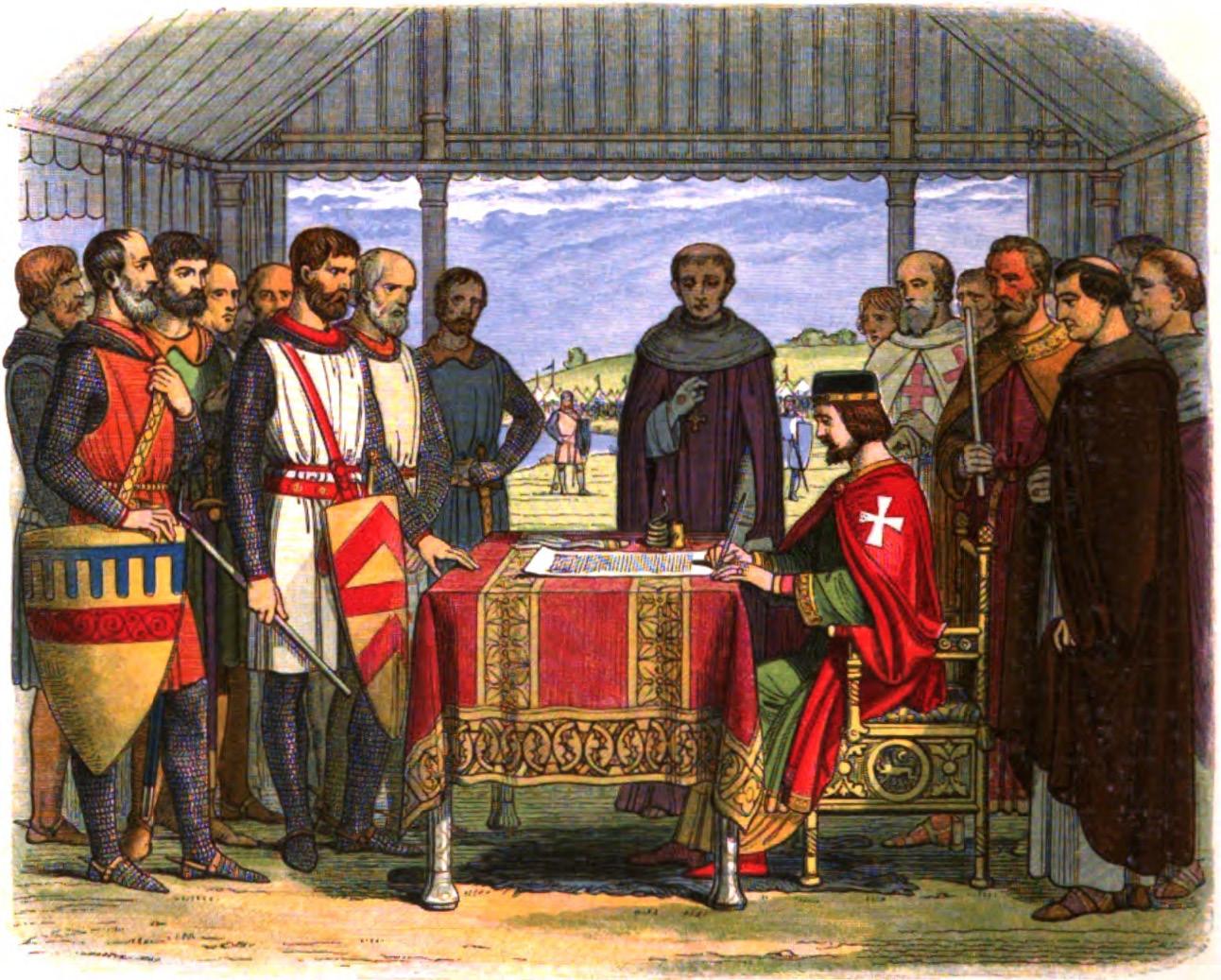
The History of the Magna Carta and Its Impact on Modern Law
The Magna Carta, or Magna Carta Libertatum, is more than just a historical document; it’s a foundational text for modern democracy and the rule of law. Signed by King John of England in 1215, its impact reverberates through centuries, shaping legal systems and inspiring movements for liberty across the globe. This exploration delves into the origins, provisions, and enduring legacy of this pivotal charter, highlighting its profound influence on the legal landscapes and democratic ideals of today.
1. The Tumultuous Birth of a Landmark Document: England in the Early 13th Century
The year 1215 witnessed England at a critical juncture. King John, ascending the throne in 1199, had proven a disastrous ruler. His disastrous military campaigns in France, particularly the loss of Normandy, had depleted the English treasury. To replenish his coffers, he levied exorbitant taxes and seized lands from his barons, disregarding traditional feudal rights and practices. His tyrannical rule, marked by arbitrary decisions and disregard for established norms, fueled widespread discontent among the English nobility.
The barons, traditionally loyal supporters of the Crown, found themselves increasingly alienated by King John’s actions. They weren’t merely protesting for personal gain; their grievances stemmed from a deep-seated concern about the erosion of established legal and customary rights. The king’s actions threatened the very fabric of feudal society, undermining the delicate balance of power between the monarch and the aristocracy. The barons’ frustration wasn’t solely about financial burdens; it was about the erosion of their traditional rights and the growing sense of unchecked royal power. This sense of injustice, coupled with the financial strain, ignited the fuse for rebellion.
The rebellion wasn’t a spontaneous uprising; it was a carefully orchestrated movement led by powerful and influential figures. Among the key players were Stephen Langton, the Archbishop of Canterbury, a man of considerable moral authority, and Henry de Bohun, Earl of Hereford, a powerful and strategically important baron. These leaders, along with many others, formulated a comprehensive list of demands aimed at curbing the king’s power and reinstating what they perceived as fundamental rights. These demands, initially presented as “Articles of the Barons,” constituted the blueprint for what would become the Magna Carta.
Negotiations between the barons and the king were tense and protracted. King John, initially resistant, eventually realized he couldn’t withstand the unified opposition. The threat of open war, with the barons assembling a formidable army, forced him to concede. On June 15, 1215, at Runnymede, a meadow near Windsor Castle, King John reluctantly affixed his seal to the Magna Carta. This act, while born out of political expediency for the king, marked a watershed moment in the history of English, and indeed, global law.
2. Deciphering the Clauses: Key Provisions and Their Broader Significance
The Magna Carta comprised 63 clauses, each addressing specific grievances and outlining remedies. While many clauses dealt with the intricacies of feudal relationships, land ownership, and the rights of the church, several provisions held profound implications for the development of modern legal systems and democratic principles. These provisions weren’t merely reactive measures to specific issues; they laid the groundwork for fundamental legal and constitutional concepts.
Clause 39, often cited as the cornerstone of the Magna Carta’s influence on modern law, declares, “No free man shall be seized or imprisoned, or stripped of his rights or possessions, or outlawed or exiled, or deprived of his standing in any other way, nor will we proceed with force against him, or send others to do so, except by the lawful judgment of his equals or by the law of the land.” This clause established the fundamental principle of due process, ensuring that individuals could not be subjected to arbitrary arrest or punishment without a fair trial and the judgment of their peers. This is a principle enshrined in numerous modern legal systems, representing a critical safeguard against the abuse of power.
Clause 40 complements Clause 39, emphasizing the principle of equal access to justice: “To no one will we sell, to no one will we refuse or delay right or justice.” This provision unequivocally states that justice should be accessible to all, regardless of social standing or wealth. This concept, while far from fully realized in 1215, laid the foundation for the modern ideal of an impartial justice system where all are equal under the law. The absence of bias and the guarantee of a fair hearing are cornerstones of justice systems around the world, directly traceable to this clause.
Beyond these specific clauses, the Magna Carta established the broader principle of the rule of law, a concept that holds both the monarch and the government accountable to the law. This was revolutionary for its time, challenging the long-held notion of absolute monarchy where the ruler stood above the law. The implication was profound: even the most powerful individual was subject to established legal processes and limitations. This principle remains a cornerstone of modern democratic governance.
The establishment of the Council of 25, a group of barons empowered to oversee the king’s adherence to the charter, foreshadowed modern systems of checks and balances. This council represented an early attempt to limit the power of the monarchy and ensure its accountability to the governed. While it wasn’t a fully-fledged legislative body, it laid the groundwork for future mechanisms designed to prevent the concentration of power and safeguard against tyranny.
3. A Ripple Effect Through Time: The Magna Carta’s Legacy in Shaping Constitutionalism
The Magna Carta’s impact wasn’t confined to its immediate historical context. Its influence permeated through centuries, shaping the development of constitutional law and influencing legal systems worldwide. It became a potent symbol of resistance against arbitrary rule and a cornerstone of the burgeoning concept of limited government.
The English Bill of Rights (1689), a landmark document further limiting royal power and expanding parliamentary authority, drew heavily from the Magna Carta’s principles. This document, a product of the Glorious Revolution, cemented the concept of a constitutional monarchy and strengthened the rights of Parliament against royal encroachment. Many of the Bill of Rights’ guarantees of individual liberty, such as protection against arbitrary imprisonment and the right to a fair trial, find their roots in the Magna Carta.
Across the Atlantic, the Magna Carta’s influence is clearly visible in the American Declaration of Independence (1776) and the United States Constitution (1787). The American colonists, steeped in English legal tradition, invoked the Magna Carta’s principles of liberty and justice in their struggle for independence from British rule. The Declaration’s emphasis on natural rights and its denunciation of tyrannical rule echoed the sentiments embodied in the Magna Carta centuries earlier. Similarly, the US Constitution’s guarantees of due process, a fair trial, and protection against arbitrary government actions are all deeply rooted in the Magna Carta’s legacy.
The Magna Carta’s reach extended beyond Anglo-American legal systems. Its principles were cited in the Universal Declaration of Human Rights (1948), a foundational document of international human rights law, and the European Convention on Human Rights (1950). These international instruments, aiming to protect fundamental human rights globally, draw inspiration from the core tenets established in the Magna Carta, demonstrating the enduring relevance of its principles in the context of modern international law.
Constitutions worldwide, including those of Canada, Australia, and India, reflect aspects of the Magna Carta’s legacy. Many incorporate principles such as due process, the rule of law, and the protection of fundamental rights, directly influenced by the historical precedent set by this medieval document. The global reach of the Magna Carta’s principles stands as a testament to its enduring power and universal appeal.
4. The Magna Carta’s Enduring Influence on Modern Democratic Ideals
The Magna Carta’s enduring influence on modern democracy is undeniable. Its emphasis on due process, equal access to justice, and the rule of law shaped the development of democratic institutions and inspired movements for social justice. The Magna Carta’s principles are reflected in many fundamental aspects of modern democratic governments.
In the United States, the Fifth and Sixth Amendments of the Constitution directly echo the Magna Carta’s guarantees of due process and a fair trial. The Fifth Amendment’s protection against self-incrimination and the Sixth Amendment’s right to legal counsel, while developed over centuries, find their conceptual foundation in the Magna Carta’s emphasis on a fair legal process.
The concept of the separation of powers, a hallmark of modern democracies, can be traced back, albeit indirectly, to the Magna Carta’s attempt to limit the absolute power of the monarch through the Council of 25. This early experiment in distributing power laid the groundwork for the modern separation of powers between the legislative, executive, and judicial branches, a crucial element in preventing tyranny and upholding democratic governance.
Landmark legal decisions across the globe continue to cite the Magna Carta’s principles. Cases concerning individual liberties, fair trials, and the limits of government power frequently draw upon the historical significance and the enduring relevance of the Magna Carta’s provisions. The document’s impact shapes interpretations of human rights and ensures that fundamental freedoms are protected against the arbitrary exercise of state power.
5. A Living Legacy: The Magna Carta’s Continued Relevance in the 21st Century
The Magna Carta is not a relic of the past; it remains a potent symbol of the ongoing struggle for human rights and justice. The 800th anniversary of its signing in 2015 was marked with worldwide celebrations, underscoring its enduring significance in the contemporary world. Its message of limited government, individual liberties, and the rule of law resonates as powerfully today as it did in 1215.
The Magna Carta’s principles serve as a crucial reminder of the ongoing need to protect individual rights against the potential for abuse of power. In an era of increasing governmental surveillance and growing concerns about civil liberties, the Magna Carta’s emphasis on due process, fair trial, and protection against arbitrary state actions serves as a vital check on potential overreach. Its message is particularly relevant in contexts where human rights are threatened or curtailed.
Moreover, the Magna Carta’s enduring impact lies in its inspirational power. Its principles have fueled democratic movements throughout history, from the struggle for American independence to contemporary calls for social justice and human rights. Its influence is evident in calls for transparency, accountability, and the protection of fundamental freedoms.
The Magna Carta, while rooted in the specific context of 13th-century England, transcends its temporal and geographical origins. Its principles continue to shape legal systems, inspire democratic movements, and serve as a powerful reminder of the ongoing need to safeguard fundamental rights and liberties. It stands as a living testament to the enduring power of ideas and the unwavering pursuit of justice and liberty. In conclusion, the Magna Carta’s legacy is not merely historical; it is an ongoing and evolving influence on the legal and political landscape of the modern world. Its principles serve as a beacon, guiding the pursuit of justice and equality in the ongoing struggle for a more just and democratic future.


